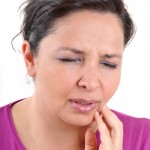
Dentine hypersensitivity is typified by a short, sharp pain in response to an external stimulus (cold, heat, osmotic, tactile, chemical that is not explained by any other dental problem. Typically related to gingival recession its prevalence has been reported to be between 8-98% and a wide range of interventions have reported to have a beneficial effect including lasers.
The aim of this Cochrane review was to assess the effectiveness of lasers in the treatment of dentine hypersensitivity.
Methods
Searches were conducted in the Cochrane Oral Health’s Trials Register, the Cochrane Central Register of Controlled Trials (CENTRAL), Medline, Embase, CINAHL, LILACS BIREME, ISI Web of Science, ZETOC, OpenGrey, the World Health Organization International Clinical Trials Registry and US National Institutes of Health Ongoing Trials Register ClinicalTrials.gov databases with no restriction on language or date of publication. Randomised controlled trials of any type of in-office laser therapy compared to placebo or no treatment for dentine hypersensitivity were considered. The primary outcomes were quantitative pain scale (visual analogue scale (VAS) tested with air blast or tactile stimulus at different time points. Two reviewers independently and in duplicate screened the search results, extracted data, and assessed the risk of bias. Data analysis followed standard Cochrane procedures with mean differences (MD) and 95% confidence intervals (CI) being reported for continuous outcomes. the overall certainty of the evidence was assessed using GRADE.
Results
- 23 studies were included involving 936 patients and 2296 teeth.
- 5 studies were considered to be at low risk of bias, 13 at unclear, and five at high risk of bias.
- 17 studies contributed data to the meta-analyses.
- Results demonstrated that with the exception of paint tested tactile stimuli in the long term the application of all types of lasers combined compared to placebo or no treatment may reduce pain intensity.
| No. of Studies | Mean difference
(95%CI) |
Certainty of evidence
(GRADE) |
|
| Air blast stimuli | |||
| short term | 13 | -2.24 ( -3.55 to -0.93) | Low |
| medium term | 11 | -2.46 ( -3.57 to -1.35) | Very low |
| long term | 5 | -2.60 ( -4.47 to -0.73) | Very low |
| Tactile stimuli | |||
| short term | 8 | -0.67 ( -1.31 to -0.03) | Low |
| medium term | 9 | -1.73 ( -3.17 to -0.30) | Very low |
| long term | 2 | -3.52 (-10.37 to 3.33) | Very low |
Short (0 to 24 hours), medium (more than 24 hours to 2 months), and long term (more than 2 months).
- Most studies assessed adverse events with no obvious adverse events reported.
- No studies investigated the effect on quality of life.
Conclusions
The authors concluded: –
Limited and uncertain evidence from meta-analyses suggests that the application of laser overall may improve pain intensity when tested through air blast or tactile stimuli at short, medium, or long term when compared to placebo/no treatment. Overall, laser therapy appears to be safe. Future studies including well-designed double blinded RCTs are necessary to further investigate the clinical efficacy of lasers as well as their cost-effectiveness.
Comments
This Cochrane review follows their well-established review methodology identifying 23 trials comparing lasers against placebo or no treatment for dentine hypersensitivity. Effectiveness was assessed in the short (0 to 24 hours), medium (more than 24 hours to 2 months), and long term (more than 2 months) using both air blast and tactile stimuli. For air blast stimulus reduced pain was noted at all three time points but only for short and medium term for tactile stimulus. However, only a small proportion of the studies assessed outcomes after more than 2 months. While 23 studies were identified only 17 contributed to the meta-analysis and the overall certainty of the evidence of any benefit was only rated as low to very low which needs to be taken into consideration. In addition, lasers were tested against placebo or no treatment and while a statistically significant difference was seen, the differences are small so may not be clinically important particularly as a wide range of other treatments for dentine hypersensitivity are available. Further well conducted studies are needed to improve the quality of the available evidence both for lasers and their comparison with other available treatments.
Links
Primary Paper
Mahdian M, Behboodi S, Ogata Y, Natto ZS. Laser therapy for dentinal hypersensitivity. Cochrane Database of Systematic Reviews 2021, Issue 7. Art. No.: CD009434. DOI: 10.1002/14651858.CD009434.pub2.
Other references
Dental Elf – 23rd Oct 2019
